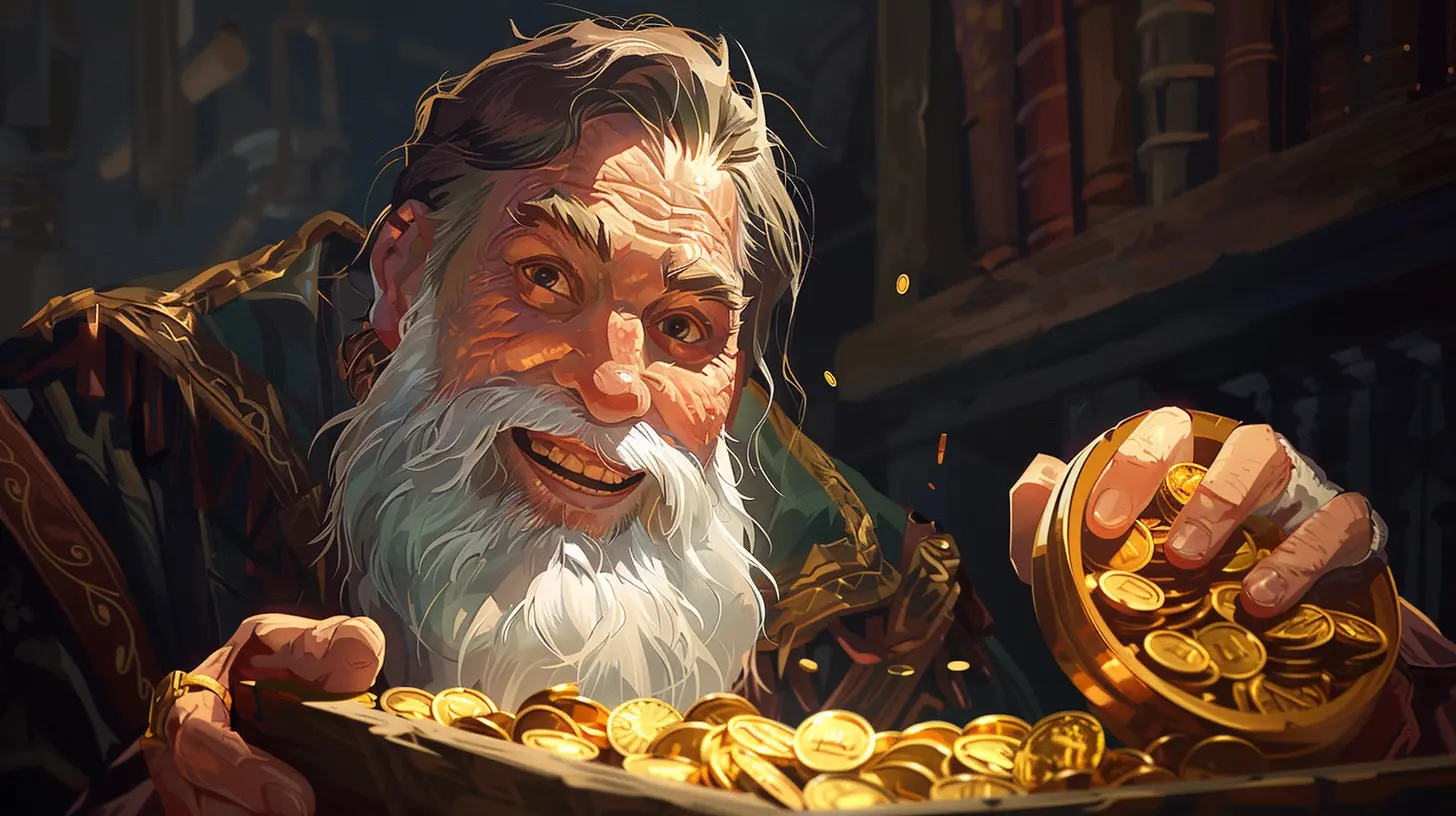The Psychology of Backer Motivation: Why People Donate to Game Campaigns
31 July 2025
Crowdfunding games isn’t just a trend—it’s a full-blown movement in the gaming world. Kickstarter, Indiegogo, and other crowdfunding platforms have turned everyday dreamers into game developers, drawing in millions from fans willing to fund projects before they even see a finished product. But have you ever stopped to wonder why people open their wallets for games that don’t even exist yet?
Welcome to the fascinating world of backer psychology. We're digging into the real reasons why people fund game campaigns, what motivates them emotionally and psychologically, and what makes a campaign irresistible. Whether you're a developer planning your next Kickstarter or just a curious gamer, this deep dive will give you a whole new appreciation for what’s happening behind the "Back This Project" button.
What Exactly Is Backer Motivation?
At its core, backer motivation is the why behind every pledge. It’s more than just wanting a cool new game—it’s often tied to deeper emotional triggers.Backing a campaign is different from buying a product on Amazon. You're not guaranteed an item, and you're not just a customer—you’re a supporter, a believer, a part of something bigger. That emotional connection is where the psychology kicks in.
The Role of Emotional Investment
Let’s face it—people don’t just support a game because it looks fun. They support it because it makes them feel something.1. Hope and Excitement
Backing a game is like planting a seed. You believe in it, nurture it with your money, and you hope it blossoms into something amazing. It's like buying a ticket to a movie that hasn’t been made yet, based on just the trailer and your gut feeling.That anticipation—like waiting for Christmas morning—is intoxicating. A strong campaign trailer or concept can spark dreams in backers, making them feel like they’re part of something groundbreaking.
2. Nostalgia and Memory
So many campaigns tap into nostalgia. Think about all the retro-inspired games that skyrocket in funding. These games remind people of their childhood or a better time. When a campaign stirs up warm memories, people can’t help but throw in their support.Remember "Shenmue III"? People weren’t just backing a game—they were backing the continuation of a memory, a piece of their past.
The Desire to Belong
Humans crave connection. Crowdfunding taps into that big time.1. Community and FOMO
Backers often feel like they're joining a club. There’s a thrill in being part of a movement. When thousands of people are piling onto a campaign, you don’t want to be left out. That Fear of Missing Out (FOMO) is a real psychological nudge.Plus, the comment sections, stretch goal reveals, and regular updates create a buzz. It’s not just about funding a game; it’s about being part of a living, breathing community.
2. Identity and Values
People like to support projects that reflect who they are or who they want to be. Supporting an indie dev over a major studio? That tells the world you value creativity over corporate control. Backing a game with environmental themes? That aligns with your personal beliefs.When a campaign resonates with a person’s identity, it becomes more than a purchase. It becomes a statement.
Trust: The Silent Dealbreaker
No matter how passionate someone is, they won’t pledge if they don’t trust you.1. Transparency Builds Confidence
Backers want to know where their money is going. A detailed roadmap, clear use of funds, and honest updates go a long way. When developers are transparent, backers feel safe.Imagine lending money to a friend—you’d want to know how they plan to use it, right? Same thing here.
2. Experience and Reputation
If the dev team has shipped games before or has industry clout, that builds instant trust. But even new teams can establish credibility with a well-thought-out plan, a slick presentation, and maybe a few playable demos.Campaigns that seem sketchy or lack detail? They rarely get traction.
The Allure of Rewards and Exclusivity
Let’s talk about the goodies—those shiny rewards that come with pledging.1. Tangible Perks
Backer-exclusive content, physical goodies like art books or soundtracks, early access—these things sweeten the deal. They're not just compensation; they create a sense of privilege.Getting something unique makes people feel special. It’s like attending a secret show or owning a signed album—there’s pride in exclusivity.
2. Gamifying the Pledge
Stretch goals, limited-time tiers, early bird specials—they all work like mini-games within the campaign. Urgency pushes people to act fast. When developers cleverly gamify the funding process, they actually make backers feel more engaged.Psychological Triggers That Drive Donations
Now let’s dive deeper into the mental levers that campaigns pull.1. Reciprocity
If a campaign gives you a compelling video, cool concept art, or a free demo, you feel compelled to give something back. That’s reciprocity in action. It’s a human instinct: someone gives you something, you want to return the favor.2. Social Proof
When people see that others are backing a project—especially in large numbers—they're more inclined to do the same. It’s the classic bandwagon effect.We trust the crowd’s judgment. If 10,000 people are backing a game, it must be good, right?
3. Scarcity
Limited reward tiers and stretch goals create urgency. People don’t want to miss out on a rare reward or a milestone that could unlock awesome content. Scarcity breeds action.Developers as Storytellers
Every successful campaign tells a story.It’s not just “we need funds.” It’s “we’ve got this crazy idea, we’ve worked night and day, and we want you to be part of this journey.” They paint a picture of the dream and invite you to help build it.
Good stories trigger empathy. They make us care.
The Role of Influencers and Media
A campaign featured by a popular streamer or gaming blog can skyrocket overnight. Why?Because when someone you trust vouches for a project, it validates your interest. It’s like having a friend say, “Hey, I played the beta—it’s awesome.”
Influencers fuel the emotional and social proof engine. Plus, media coverage gives campaigns visibility, which again feeds into that crowd psychology we talked about earlier.
Post-Pledge Satisfaction: Staying in the Loop
Motivation doesn’t end when someone clicks "pledge." Good campaigns keep that emotional fire burning with regular updates, behind-the-scenes content, and eventually—delivery of the game.Backers want to feel like collaborators, not customers. That ongoing connection can lead to future support, word-of-mouth, and even community involvement like beta testing, fan art, and beyond.
Not Every Backer Is the Same
It’s important to realize that people back for different reasons. Let’s break it down:- 🎮 Hardcore Gamers: They want the game early, want to shape development, and love testing.
- 🛍 Collectors: All about those physical editions, signed posters, and unique cards.
- 🤝 Philanthropists: They just want to support the vision—even if they never play.
- 🧠 Analysts: They study, review, and fund what they intellectually believe in.
- 💬 Social Backers: They join because their friends did, or because it gives them clout.
Knowing your audience helps tailor campaign messaging and reward tiers to better trigger those motivations.
What Game Creators Can Take Away
If you’re a developer reading this, here’s the gold:1. Tell a great story. Make your campaign emotional, personal, and passionate.
2. Build trust. Be transparent, show your work, and communicate constantly.
3. Offer value. Make rewards exciting, exclusive, and worth the pledge.
4. Create urgency. Use scarcity and stretch goals to push momentum.
5. Build community. Make backers feel like part of a team, not just a sales funnel.
Wrapping It Up
So why do people donate to game campaigns? It’s a beautiful mix of emotion, community, nostalgia, trust, and the thrill of being part of something new and exciting. Crowdfunding taps into some of our most basic human needs—to connect, to believe, to support, and to belong.Next time you see a Kickstarter blow past its funding goal, remember—it’s not just about the game. It’s about the feeling behind it.
all images in this post were generated using AI tools
Category:
CrowdfundingAuthor:

Lana Johnson
Discussion
rate this article
1 comments
Maisie McNeil
This article brilliantly explores the intricate psychological factors driving backer motivations in game crowdfunding. Understanding these dynamics not only enhances campaign strategies but also deepens our appreciation for the community's passion and support.
August 17, 2025 at 4:55 AM

Lana Johnson
Thank you for your insightful comment! I'm glad you found the article useful in highlighting the psychological factors behind backer motivations. Your appreciation for the community's passion is exactly what I hope to convey.


